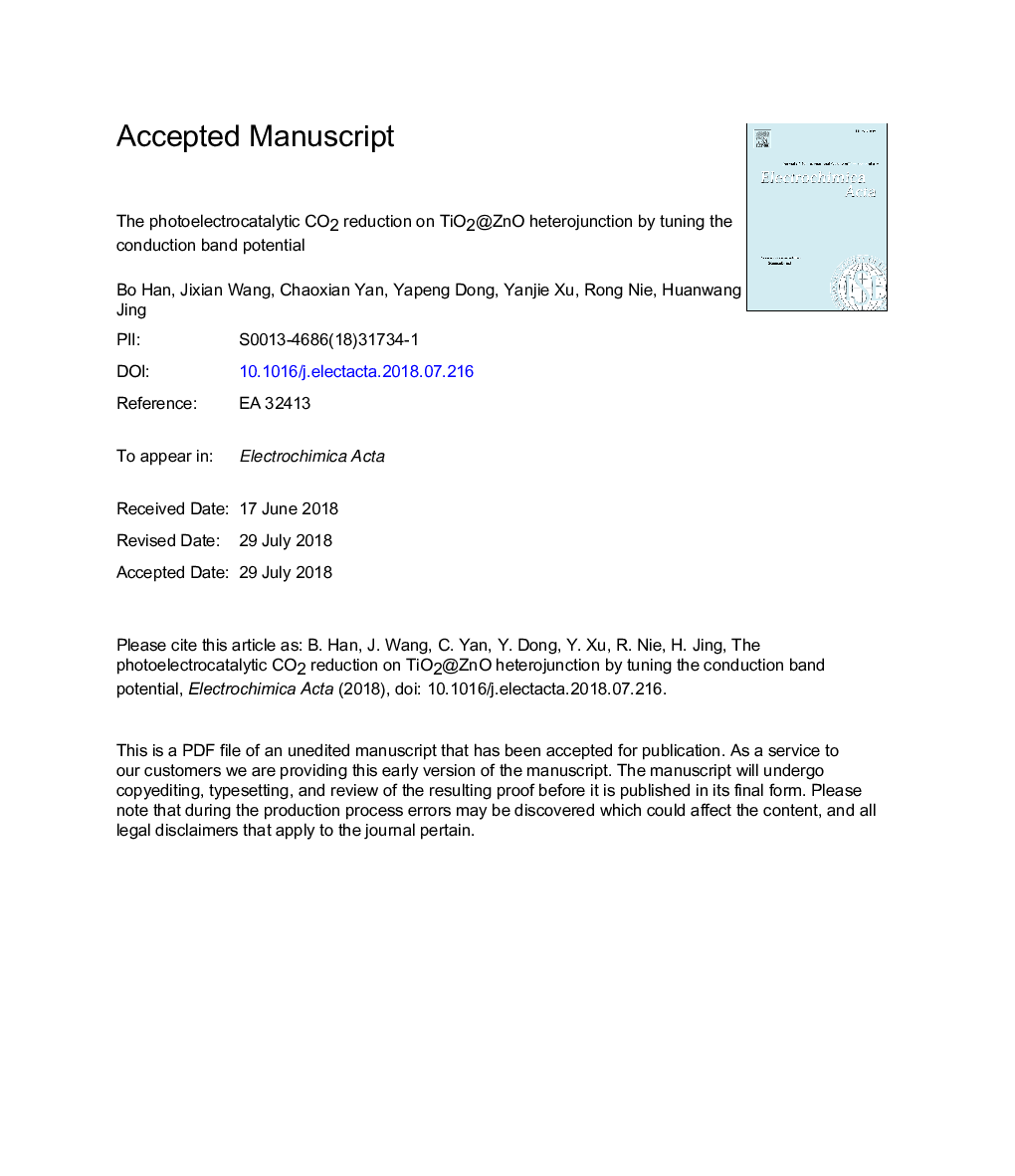| Article ID | Journal | Published Year | Pages | File Type |
|---|---|---|---|---|
| 6601774 | Electrochimica Acta | 2018 | 20 Pages |
Abstract
The photoelectrocatalytic CO2 reduction is an attracting research field in chemistry, materials, environment and energy science. In this paper, a heterojunction TiO2@ZnO was in-situ fabricated onto the FTO glass. The multi-functionalized heterojunctions of M-TiO2@ZnO/FTO (Mâ¯=â¯Pd, Pt, Ni and Au) were used as photocathodes in the photoelectrocatalytic cell of dye/M-TiO2@ZnO/FTO|KHCO3|BiVO4. The working electrodes of dye/M-TiO2@ZnO/FTO were characterized by SEM, TEM, XRD, EPR, UV-vis, and FT-IR spectra. These photoelectrocatalytic cells convert efficiently CO2 to hydrocarbons at voltage of â0.6 â¼Â â 1.0â¯V under simulated sunlight irradiation. The conduction band potential of heterojunction TiO2@ZnO/FTO was adjusted by metal deposition, including Pd, Pt, Ni and Au, which can basically affect the process of CO2 reduction and give different selectivity for hydrocarbons, such as, methanol, ethanol, formic acid and acetic acid. The M-TiO2@ZnO/FTO photocathodes, possessing lower conduction band (CB) thanâ¯ââ¯0.38â¯V of standard reduction for methanol, can produce hydrocarbons due to the action of photons. On the other hand, the high electron charge transfer and active Ti3+ cations of TiO2@ZnO/FTO heterojunction could augment the activity of photoelectrocatalytic reduction of carbon dioxide, yielding total hydrocarbons in a formation rate of 62.4â¯Î¼Mâ¯cmâ2â¯hâ1.
Related Topics
Physical Sciences and Engineering
Chemical Engineering
Chemical Engineering (General)
Authors
Bo Han, Jixian Wang, Chaoxian Yan, Yapeng Dong, Yanjie Xu, Rong Nie, Huanwang Jing,
